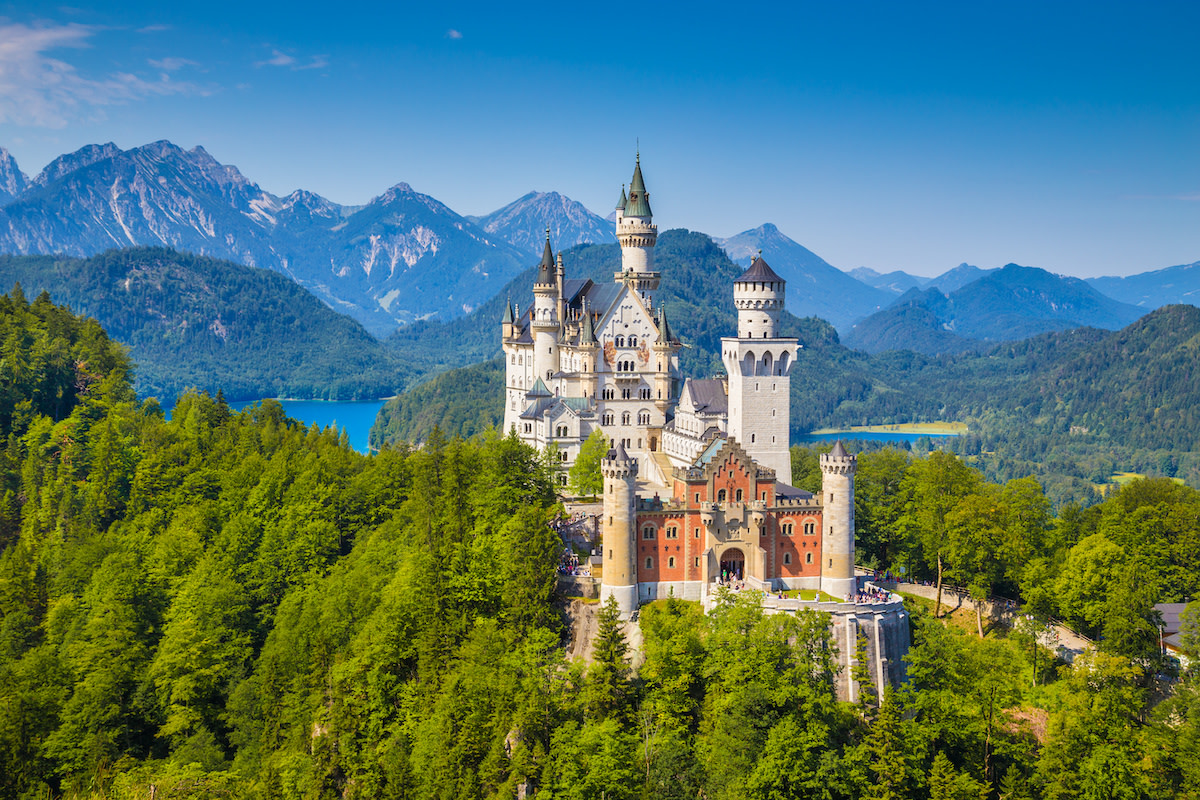A Guide to the Architecture of Neuschwanstein Castle
Written by MasterClass
Last updated: Aug 24, 2021 • 2 min read
Situated above the German village of Hohenschwangau, Neuschwanstein Castle is an architectural marvel. Learn more about the history and characteristics of this German castle.
Learn From the Best
What Is Neuschwanstein Castle?
Neuschwanstein Castle is a nineteenth-century historical castle in the Bavarian Alps of Germany. Also known as “Schloss Neuschwanstein” in German, meaning “New Swan Stone Castle,” this real-life fairytale castle stands high above the village of Schwangau in Bavaria. Neuschwanstein Castle is owned by the Bavarian Palace Department, which manages the property and offers guided tours to the public.
A Brief History of Neuschwanstein Castle
King Ludwig II of Bavaria grew up in the mid-nineteenth century in Hohenschwangau Castle in southern Germany. In 1868, with a dream of recreating his childhood home, Ludwig commissioned drawings of a new castle from Munich set designer Christian Jank. Architect Eduard Riedel designed plans based on Jank’s paintings. Construction began in the fall of 1869 and, plagued by financial setbacks, continued for several years. The Bavarian king finally moved into his royal castle in 1884 and lived there until his death in 1886. Afterward, the castle was opened to the public.
In the early twentieth century, Walt Disney traveled through Europe and visited Neuschwanstein Castle on a day trip. There, he found architectural inspiration for the Sleeping Beauty Castle, which was constructed in the center of Disneyland during the 1950s. Another Disney castle featured in the movie Cinderella also looks similar but, contrary to popular belief, was not inspired by Neuschwanstein.
3 Notable Characteristics of Neuschwanstein Castle
Explore the features that define Neuschwanstein Castle.
- 1. Architectural style: The design of Neuschwanstein Castle incorporates Gothic, Romanesque, and Byzantine styles. King Ludwig II, who came to be nicknamed the “Fairy Tale King,” commissioned an idealized version of a medieval castle. Although it resembles classic castles, it was created with no defensive purpose, instead prioritizing aesthetic value.
- 2. Interior design: The interior of the castle includes the grand Singer’s Hall, the throne room, and an artificial cave grotto. One of King Ludwig II’s primary inspirations for the interior of Neuschwanstein Castle was the work of composer Richard Wagner. Wagner’s operas, like his epic Tannhäuser, were inspired by classic legends. Mythical figures were incorporated into the interior design throughout Neuschwanstein Castle.
- 3. Technology: King Ludwig II insisted on his castle being equipped with the latest technology of his day, including telephone lines, running water, indoor plumbing, and a central heating system.
Learn More
Get the MasterClass Annual Membership for exclusive access to video lessons taught by the world’s best, including Frank Gehry, Will Wright, Annie Leibovitz, Kelly Wearstler, Ron Finley, and more.
